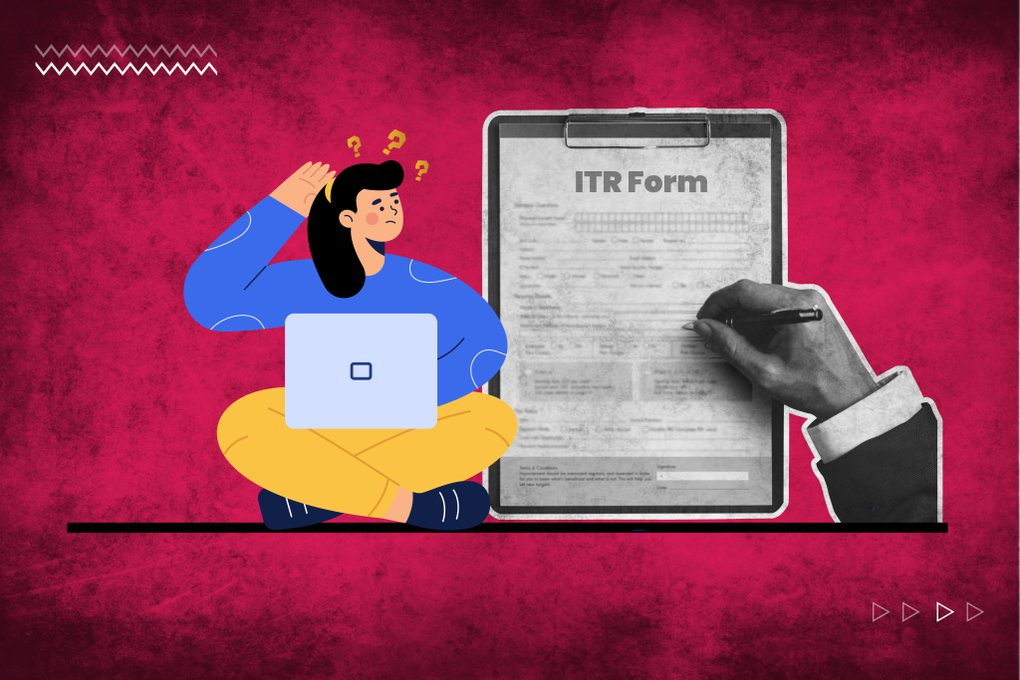


Taxes! The word itself can conjure up feelings of dread and confusion. But fear not, fellow reader, as I am here to help clear the air. Filing your taxes isn't just a yearly ritual; it's an important step that contributes to your benefit and the nation.
In India, around 7.65 crore people filed tax returns for 2023-24 in comaprison to 6.85 crore in 2022-23. And about 2.1 crore paid Tax Deducted at Source (TDS) but didn't file a tax return. With the arrival of 31 July every year, people in the nation get busy filing their taxes.
During this time, the related websites are buzzing with activities and might end up crashing. Hence, to avoid any trouble, it is advisable to prepare your Income Tax Return (ITR) form beforehand.
The most common question that needs clarification is which form I should fill out. You may not know, but there is more than one form available (7 exactly) designated for individuals with different income sources or businesses.
In this article, we will cover what ITR is, its types, and how to file it properly. It will also save you time from looking for the right form.
An Income Tax Return (ITR) is a document you submit to the Income Tax Department to report your income earned during a financial year (1 April to 31 March of the following year). ITR helps one calculate the tax they owe for the duration.
You fill it out with details like your income from various sources (salary, investments, business, etc.), deductions you're eligible for (Section 80C, 80D, etc.), and any tax already paid through withholding taxes. Based on this information, the form calculates the final tax amount you owe or the refund you're entitled to.
There are several reasons why filing an ITR form is mandatory in India:
1. Compliance with the Law: Filing an ITR is a legal obligation under the Income Tax Act 1961. Failing to file can result in penalties, interest charges, and even prosecution.
2. Accurate Tax Assessment: ITR forms help the Income Tax Department assess your tax liability correctly. It ensures you pay the correct amount of tax and avoids unnecessary demands or audits.
3. Claiming Tax Refunds: If you've paid more tax than you owe through TDS (Tax Deducted at Source) or advance tax payments, filing an ITR allows you to claim a refund for the excess amount.
4. Loan Applications & Visa Processing: ITR forms serve as proof of income and financial stability and are often required for loan applications, visa processing, and other financial transactions.
5. Government Planning & Development: ITR data helps the government understand income patterns and economic activity, which is crucial for formulating policies and allocating resources effectively.
In India, seven different types of ITR forms are available for filing income tax returns. The specific form you need depends on your income sources, income amount, and taxpayer category. Here's a detailed breakdown:
This form is most likely the one you would be filing your tax return from.
It is the ultimate ITR form for individuals, both salaried and other income, such as agriculture, pension, etc. Individuals earning up to ?50 lakh or agricultural income over ?5,000. Individuals with one house property are also eligible for ITR-1.
This ITR is not eligible for individuals with foreign income (NRIs), capital gains, business/professional income, etc. ITRs may be filed using Form 16 by salaried taxpayers.
This ITR form is suitable for individuals and HUFs (Hindu Undivided Family) who earn income (> ?50,000) from sources other than their occupation.
Individuals with more than one house property, capital gains, other income sources under Section 80TTA, and foreign income also fill it.
Some additional eligibility criteria for ITR-2 are individuals holding directorship under enterprises as well as unlisted equity shares.
This is a comprehensive form for individuals and HUFs with income from any source, including business/profession, capital gains, multiple house properties, foreign income, agricultural income, etc.
Generally, individuals who hold a partner position in a firm or earn money from intraday stock exchange or futures and options trading use ITR-3.
ITR-4 is designed for individuals, HUFs, & firms (other than
) who are residents of India with presumptive business income under Section 44AD (up to ?2 crore turnover) or professional income under Section 44ADA (up to ?50 lakh turnover).
ITR-4 is not eligible for individuals with income from other sources or exceeding the respective presumptive taxation limits.
For Firms and Companies:
ITR-5 & ITR-6 are specifically designed to be filed by companies and businesses. Their specifications are as follows:
This ITR is used by firms, LLPs (Limited Liability Partnerships), AOPs (Association of Persons), and BOIs (Body of Individuals) filing returns under Section 11 (presumptive taxation for profits and gains of business).
This form asks for the revelation of the profits and other income sources of the businesses mentioned above.
ITR-6 is suitable for companies who are not claiming exemptions under Section 11. Income Tax Act's Section 11 states that income derived from trust-held property or institutions dealing with charitable or religious purposes are exempt from tax, given that such income is used solely for religious or charitable purposes in India.
For Specific Cases:
ITR-7 is used by individuals and companies required to file returns under specific sections like 139(4A), 139(4B), etc. This form is excluded from the category of filing income tax as it deals with trust income, foreign assets, etc.
You can download all the ITR forms from the Income Tax Department's official website.
Now that you have cleared the first step to file an income tax return, it’s time to learn the last few measures:
With this, you are now equipped with the most crucial resource to file for taxes. All you need to do now is gather the data of all your income, investments, and other documentation, which is mandatory.